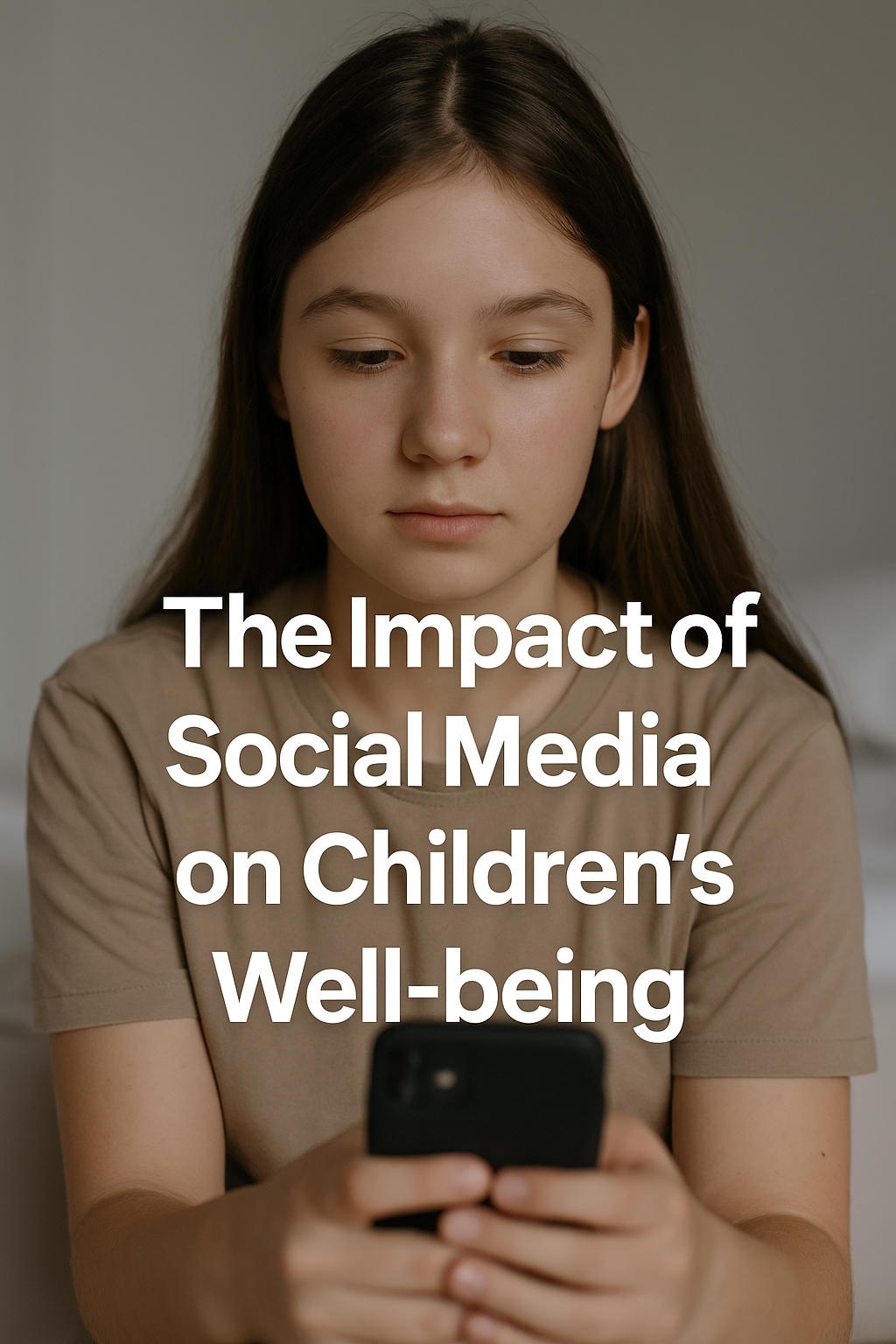Understanding the Mental Health Risks and How Parents Can Help
In today’s digitally connected world, social media is deeply woven into the lives of children and adolescents. Platforms like Instagram, YouTube, TikTok, and Snapchat are not just sources of entertainment—they’re also shaping how children think, feel, and view themselves. While social media offers opportunities for creativity, connection, and learning, it also raises serious concerns about children’s mental well-being.
📱 The Rising Influence of Social Media on Children
Children today are exposed to social media at increasingly younger ages. A 2023 Common Sense Media report revealed that 38% of children aged 8–12 and 84% of teens use social media daily. With algorithms designed to maximise engagement and content often filtered through idealised lenses, children are particularly vulnerable to the psychological effects of digital exposure.
🧠 How Social Media Affects Mental Health
1. Increased Anxiety and Depression
Numerous studies show a link between heavy social media use and higher rates of anxiety, depression, and loneliness in children and teens. Constant comparison with peers, fear of missing out (FOMO), and online validation can significantly impact self-esteem and mood.
“Excessive use of social media has been linked to poor mental health outcomes, especially among adolescent girls.” – Journal of Adolescence, 2021
2. Distorted Body Image and Self-Worth
Platforms flooded with edited photos and unrealistic beauty standards can lead to body dissatisfaction, especially in pre-teens and adolescents. This is a known risk factor for eating disorders, low self-confidence, and perfectionism.
3. Sleep Disruption
Children who use screens, especially in the evening, often experience reduced melatonin production and poor sleep quality, which in turn affects focus, learning, and emotional regulation.
4. Cyberbullying and Online Peer Pressure
Social media exposes children to risks like cyberbullying, peer exclusion, and inappropriate content. This can lead to emotional trauma, social withdrawal, and behavioural issues if not addressed early.
👨👩👧 What Can Parents Do? Strategies to Safeguard Children’s Well-being
✅ 1. Establish Age-Appropriate Digital Boundaries
-
Delay Introduction to Social Media: Consider postponing social media access until at least 13 years of age, aligning with platform guidelines. Delaying smartphone ownership until 14 can further protect mental health.
-
Utilise Parental Controls: Implement tools that allow you to monitor and limit app usage, screen time, and content access.
-
Create a Family Media Plan: Collaboratively develop a plan that outlines acceptable online behaviours, screen-free zones (like during meals and before bedtime), and daily screen time limits.
✅2. Foster Open and Non-Judgmental Communication
-
Regular Check-ins: Engage in daily conversations about your child’s online experiences, encouraging them to share both positive and negative encounters.
-
Educate About Online Risks: Discuss the potential dangers of social media challenges and the importance of critical thinking when encountering online trends.
-
Encourage Emotional Expression: Create a safe space for your child to express feelings about their online interactions, reinforcing that they can approach you without fear of punishment.
✅3. Model Healthy Digital Habits
-
Demonstrate Balanced Use: Show your child how to use technology responsibly by setting examples, such as unplugging during family time and prioritising face-to-face interactions.
-
Limit Your Own Screen Time: Children often emulate parental behaviour; managing your screen time can encourage them to do the same.
✅4. Promote Digital Literacy and Critical Thinking
-
Teach Media Literacy: Help your child understand how to evaluate online content critically, recognising misinformation and understanding the curated nature of social media posts.
-
Discuss Online Etiquette: Educate about respectful communication, the permanence of online actions, and the importance of privacy settings.
✅5. Encourage Offline Activities and Socialisation
-
Support Extracurricular Involvement: Encourage participation in sports, arts, or community service to provide fulfilling alternatives to screen time.
-
Facilitate In-Person Interactions: Promote opportunities for your child to build relationships outside the digital realm, enhancing social skills and emotional intelligence.
✅6. Monitor for Signs of Digital Distress
-
Be Vigilant: Watch for changes in behaviour, such as withdrawal, mood swings, or declining academic performance, which may indicate negative online experiences.
-
Seek Professional Help When Needed: If concerns arise, consult with mental health professionals who can provide guidance tailored to your child’s needs.
🌈 Conclusion: Social Media is a Tool—Not a Replacement for Real Connection
Social media isn’t inherently harmful, but how it’s used—and how often—matters deeply, especially during formative years. By being proactive, involved, and empathetic, parents can help children harness the benefits of technology while minimising its risks.
Let’s raise a generation that’s not only digitally savvy but also mentally strong and emotionally aware. 💛
References:
- Lin LY, Sidani JE, Shensa A, Radovic A, Miller E, Colditz JB, Hoffman BL, Giles LM, Primack BA. ASSOCIATION BETWEEN SOCIAL MEDIA USE AND DEPRESSION AMONG U.S. YOUNG ADULTS. Depress Anxiety. 2016 Apr;33(4):323-31.
- Emily B. O’Day, Richard G. Heimberg, Social media use, social anxiety, and loneliness: A systematic review, Computers in Human Behavior Reports. 2021; 3(100070). ISSN 2451-9588.

Akanksha Sharma
Dr. Akanksha Sharma, Head Writer and creator of AtoZ of Pregnancy, is dedicated to empowering women, parents, and families through 360-degree knowledge. She and her team provide evidence-based advice to guide families through pregnancy, parenting and beyond.






